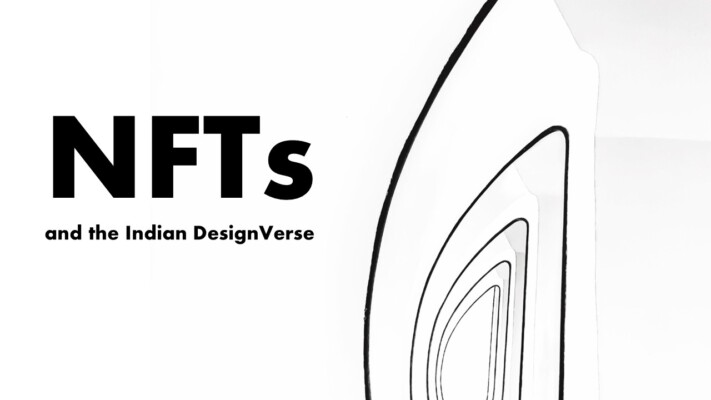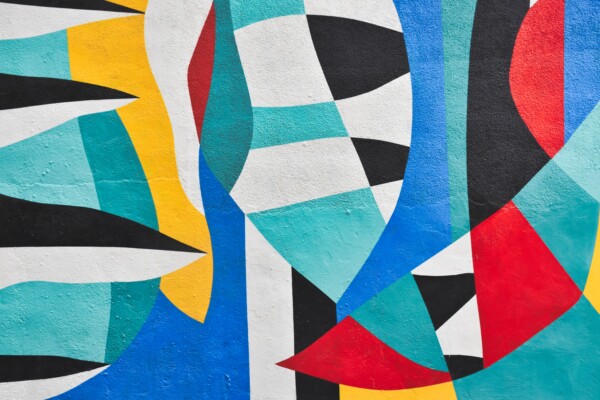 Traversing the realm of the real and the unreal… Scripting a new history for the creators of tomorrow… If you are a consumer of design, art or fashion, chances are you’ve been hearing a lot about NFTs or non-fungible tokens as this buzzword has been dominating conversations around art, fashion, design, basically any form of creation that is open for consumption.
Traversing the realm of the real and the unreal… Scripting a new history for the creators of tomorrow… If you are a consumer of design, art or fashion, chances are you’ve been hearing a lot about NFTs or non-fungible tokens as this buzzword has been dominating conversations around art, fashion, design, basically any form of creation that is open for consumption.
So, what are NFTS? They are a virtual signature that establishes the creative ownership of the artist over their work. In the digital world, it is the seal of authenticity or originality. In the world of digital fashion, it’s akin to a label that designers use in the real world to give a brand name and identity or trademark to their creations. So, in essence, NFTs are the hallmark of digital asset creation. Through NFTs, artists or creators can make digital pieces and own them as their original creation. They are stored digitally on a ledger called the blockchain. The term “non-fungible” means they can’t be replicated.
From a work of art or photograph, to a GIF, literary work, dress, product, a piece of music, or multiple pieces put together, you can create an NFT of anything that is in the digital ecosystem. Once created, these NFTs can even be traded online via dedicated portals. Reportedly, some NFTs have been bought and sold for millions making them similar to priceless works of art where there is no bar to imagination and output.
 Since NFTs enable artists to digitally secure their creations, they can go a long way in solving the copyright problem and foster an empowered ecosystem where works of art can be reproduced without having to go through the rigmarole of obtaining permission. Recently, fashion designer Raghavendra Rathore converted his personal art into NFTs via blockchain technology. Several Indian designers are already joining the NFT universe. Recently, FDCI (Fashion Design Council of India) and Lakmé Fashion Week put together a ‘FDCI X Lakme Fashion Week Moments’ NFT, featuring significant fashion week moments. The hype is real.
Since NFTs enable artists to digitally secure their creations, they can go a long way in solving the copyright problem and foster an empowered ecosystem where works of art can be reproduced without having to go through the rigmarole of obtaining permission. Recently, fashion designer Raghavendra Rathore converted his personal art into NFTs via blockchain technology. Several Indian designers are already joining the NFT universe. Recently, FDCI (Fashion Design Council of India) and Lakmé Fashion Week put together a ‘FDCI X Lakme Fashion Week Moments’ NFT, featuring significant fashion week moments. The hype is real.
What’s more, NFTs promise a different revenue stream altogether for creators not just from the world of fashion, but from that of visual art, interior design and architecture and, of course, lighting. Creators and designers can’t ignore the fact that this futuristic technology could prove to be a great stream of monetising their current/existing creations by digitising it, or even creating brand new digital-first pieces altogether. Since no NFT can be replicated, this is a huge game-changer for protecting their intellectual property.

 Brooklyn-based digital creator Ravi Guru Singh’s NFT collection was 3D-modelled by digital fashion designer Madrid-based Lorena Bello, while the world’s first NFT fashion marketplace DIGITALAX created all scenes, animation and renders. Featuring a lehenga choli with a ‘binary flower’ and a sherwani with chip lines, it heralded the new dawn of decentralisation.
Brooklyn-based digital creator Ravi Guru Singh’s NFT collection was 3D-modelled by digital fashion designer Madrid-based Lorena Bello, while the world’s first NFT fashion marketplace DIGITALAX created all scenes, animation and renders. Featuring a lehenga choli with a ‘binary flower’ and a sherwani with chip lines, it heralded the new dawn of decentralisation.
In several interviews, Singh has predicted that the fashion metaverse — or web3 fashion space — will see a phenomenal rise.
At Klove,
we have been navigating the world of NFTs with keen attention and our minds are numb with thoughts of an exciting future where opportunities are already at an inflection point. But since we like to put our labour of love in everything we do, our debut has to be something out of the ordinary, truly exclusive in nature. As experts predict that the future would belong to those who could make sensational creations offering the consumer a sense of singular pride in owning the product, we feel that NFTs would demand some disruptive energy and crackling creativity to offer that singular pride to the Gen Z user.

